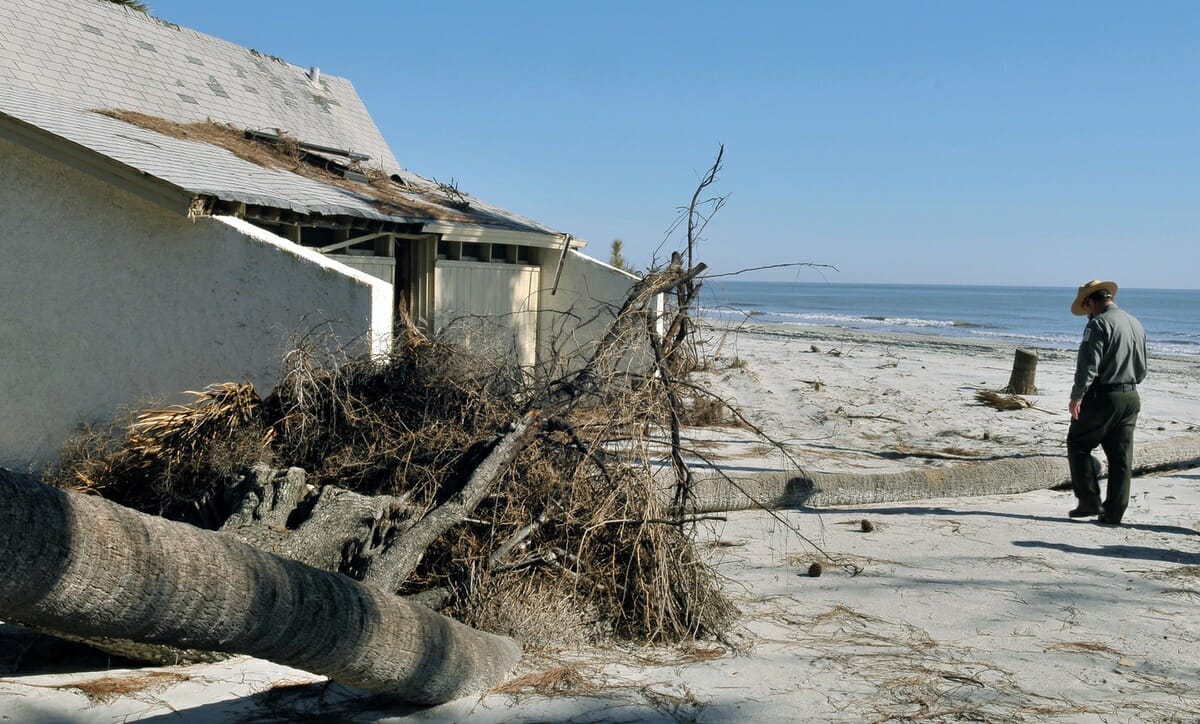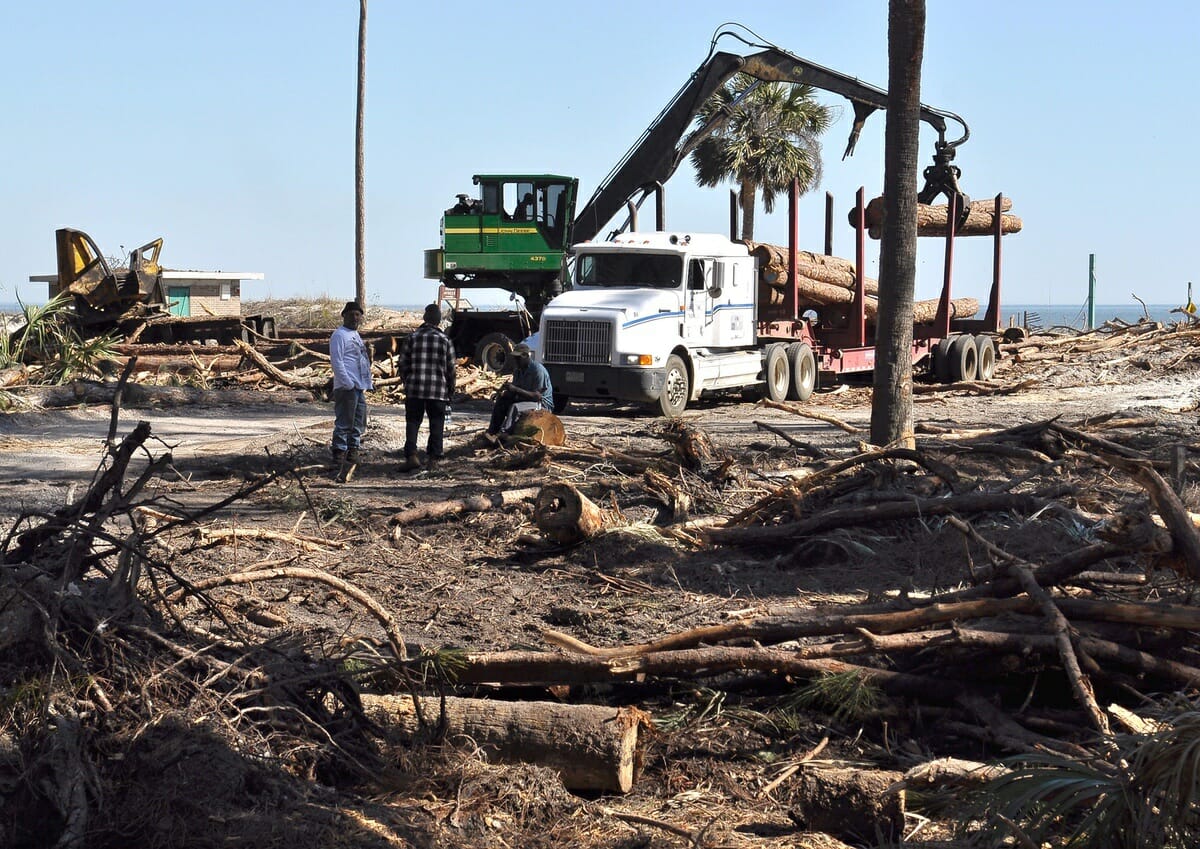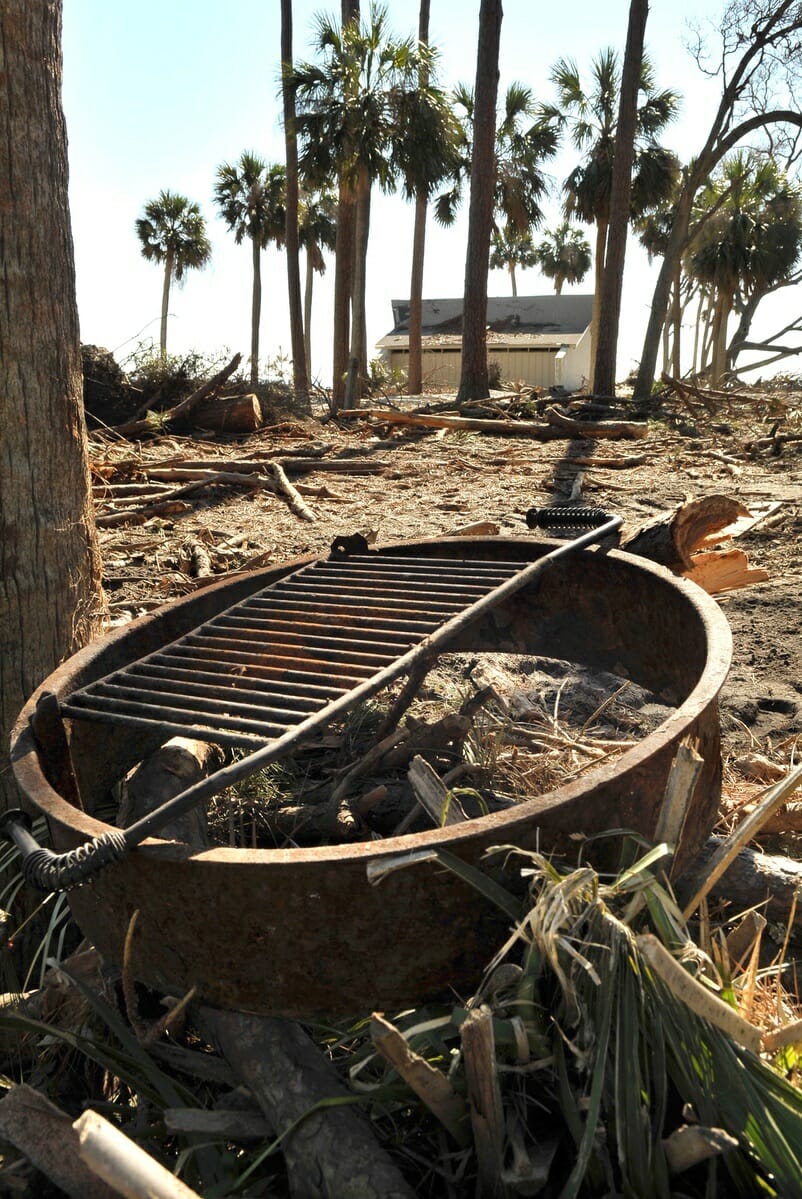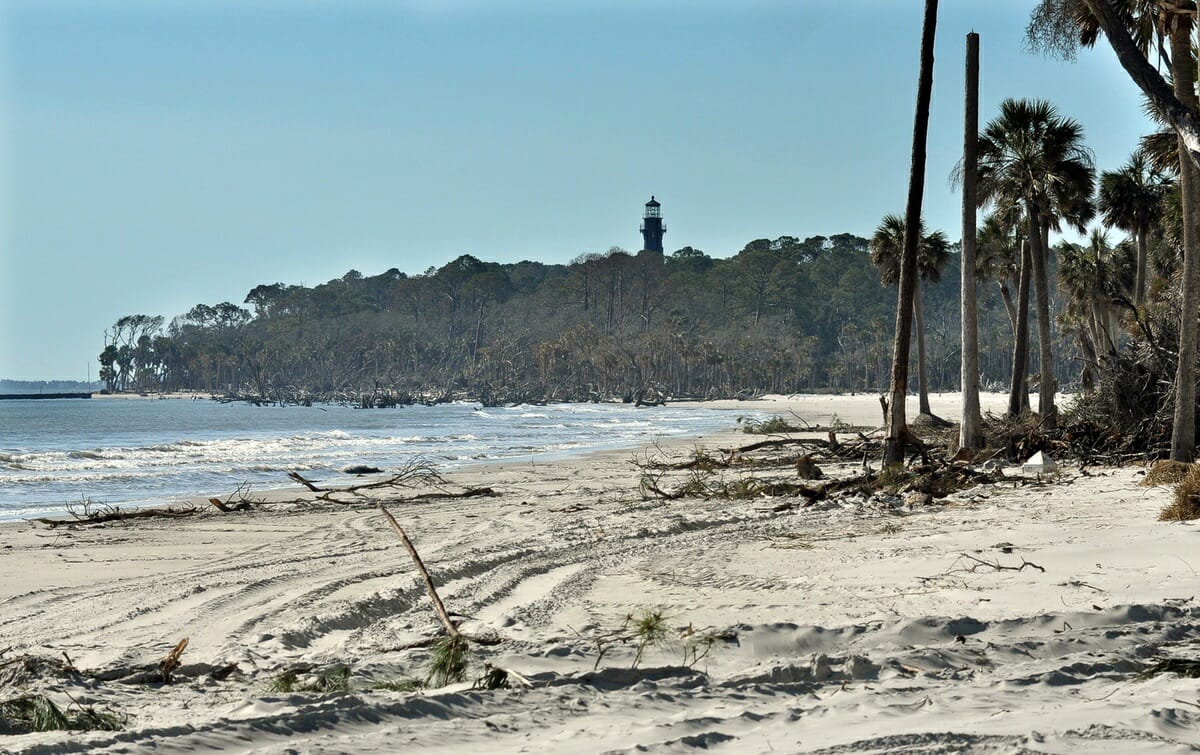Photo above: One of the comfort stations at the Hunting Island campground still stands but was heavily damaged during Hurricane Matthew. Photos by Bob Sofaly.
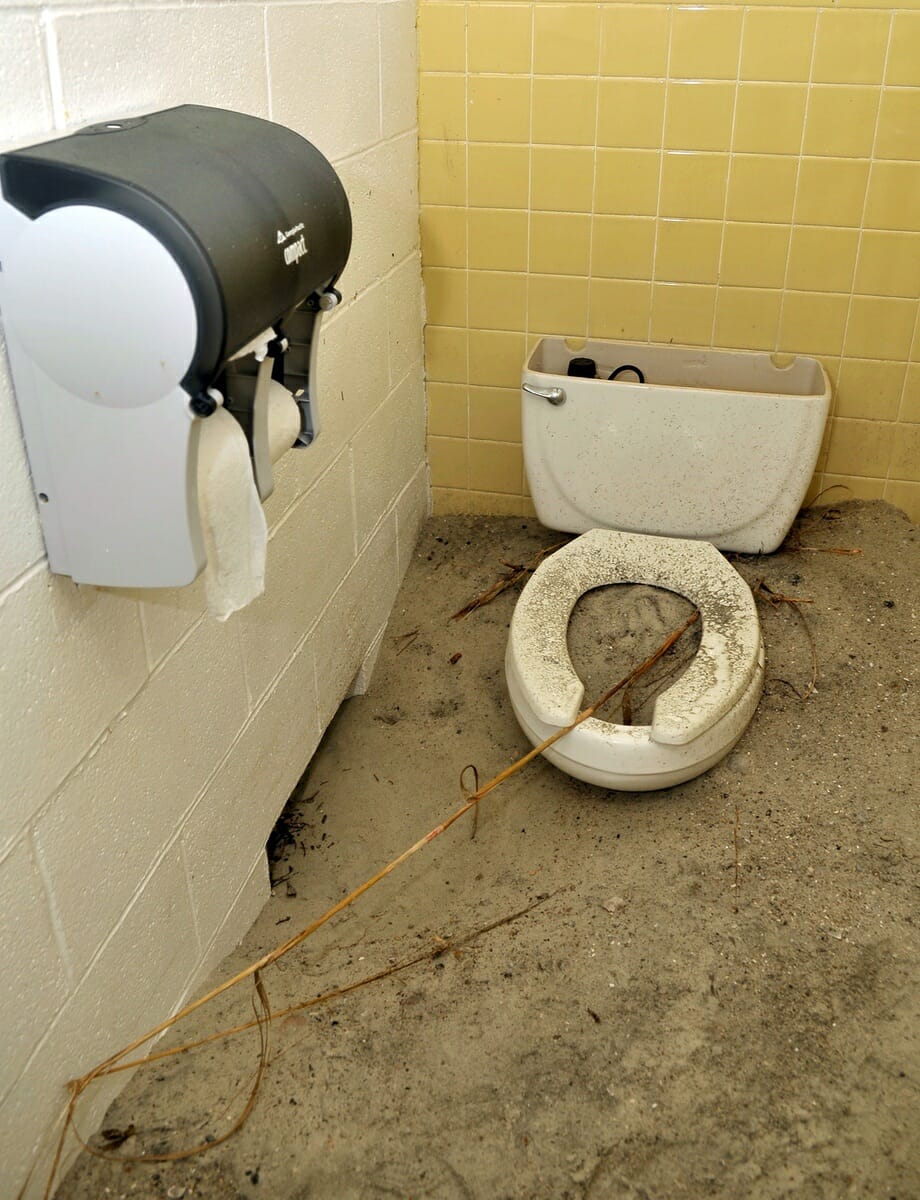
By Sally Mahan
Before the early morning hours of Oct. 8, Hunting Island was home to an incredibly popular campground, an expansive, glorious beach and walking trails through the lush maritime forest.
Now, it looks like a battleground.
Beaufort County residents have seen the piles of debris caused by Hurricane Matthew; they’ve seen the landscape change before their very eyes.
But nothing quite prepares you for Hunting Island.
The 5,000-acre barrier island, like other barrier islands in Beaufort County, took a sucker punch right in the face from Hurricane Matthew.
The 19th century lighthouse, the nature center, Little Blue (the small lone cabin left in the park) and the park rangers’ homes survived intact.
But that’s about it.
The trails are covered in fallen trees; the lagoon suffered saltwater intrusion; and the campground is a tangle of trees, limbs and debris.
Additionally, the 9-foot storm surge destroyed all of the dunes and the beach suffered a tremendous amount of erosion. Sand was pushed up into one of the bathrooms closest to the beach and it piled up to the top of the bowls (and even inside the bowls) of the toilets. Four trees also fell on that bathroom.
There is a lot of debris still on the beach, including crab traps, branches, palmetto leaves and more. Park manager Daniel Gambrell said the beach will have to be renourished because there is so little of it left.
One positive note is the “boneyard” of trees on the beach survived, but were pushed farther away from the water.
Additionally, more than 2,000 trees have been lost throughout the park, some due to the high winds, and most pines were downed or have died because they couldn’t survive the salt water intrusion.
The park is now inhabited by state park rangers and the cleanup contractor, which is clearing up the more the million of dollars in damages.
The camping area is where much of the work is focused and where there is a tremendous amount of devastation.
When you drove up to the campground entrance before Matthew, you couldn’t see the beach for the trees. There were 88 camping sites in that area closest to the beach. Now, most of the trees are gone, except some of the sturdy palmetto trees, and the ocean is clearly in view. Some trees that are standing lost their tops and look like large sticks.
Those 88 sites will remain closed for the foreseeable future because salt water got into the electrical services and the system would need to be completely replaced.
Salt water also got into the plumbing system of the park as a whole.
Additionally, grills were upended, signs were twisted and downed, picnic tables were destroyed and trees fell on top of the bathrooms.
For the rangers, the site was horrifying when they first returned after evacuating the park.
“When we got back, the damage was just massive,” said Daniel Gambrell, Hunting Island park manager. “It really was devastating to see it.”
The island was under water, and he said it took him and other rangers four and a half hours to get from the entrance to the lighthouse, a walk that would usually take about 25 minutes.
“There were just so many trees down and at some points we were walking through 3 feet of water,” he said.
“This is such a special place,” said Gambrell. “We take pride in our park and it’s hard to see it like this.”
However, he is hoping that at least 102 campsites will reopen by the end of May. And he’s optimistic about the future.
“We want people to visit, but it’s just not safe,” said Gambrell. “We suffered a lot of damage, but we’re making good progress with the cleanup. And when we get done, we think it will be even better.”
